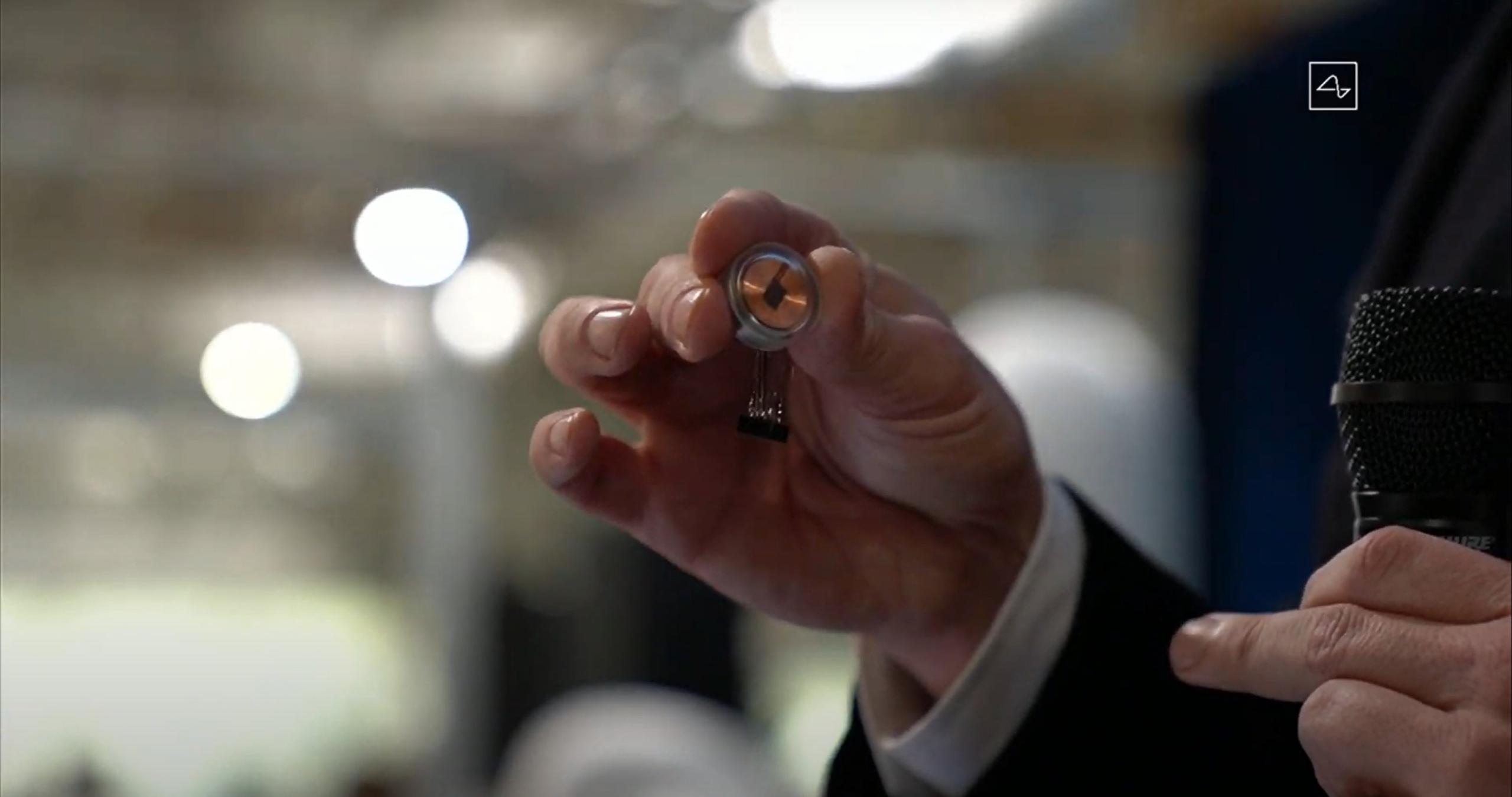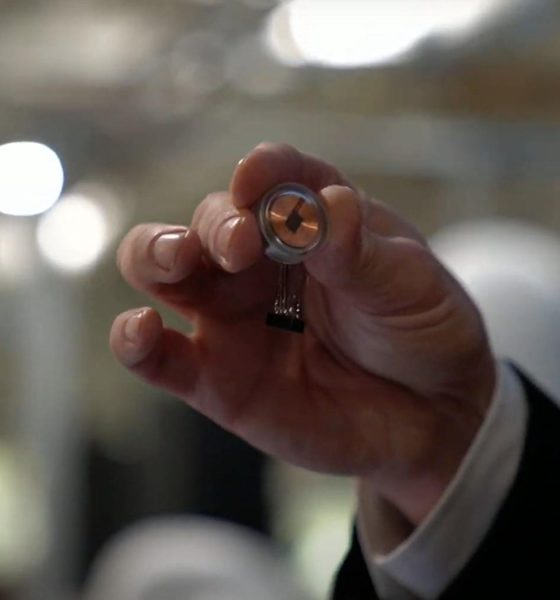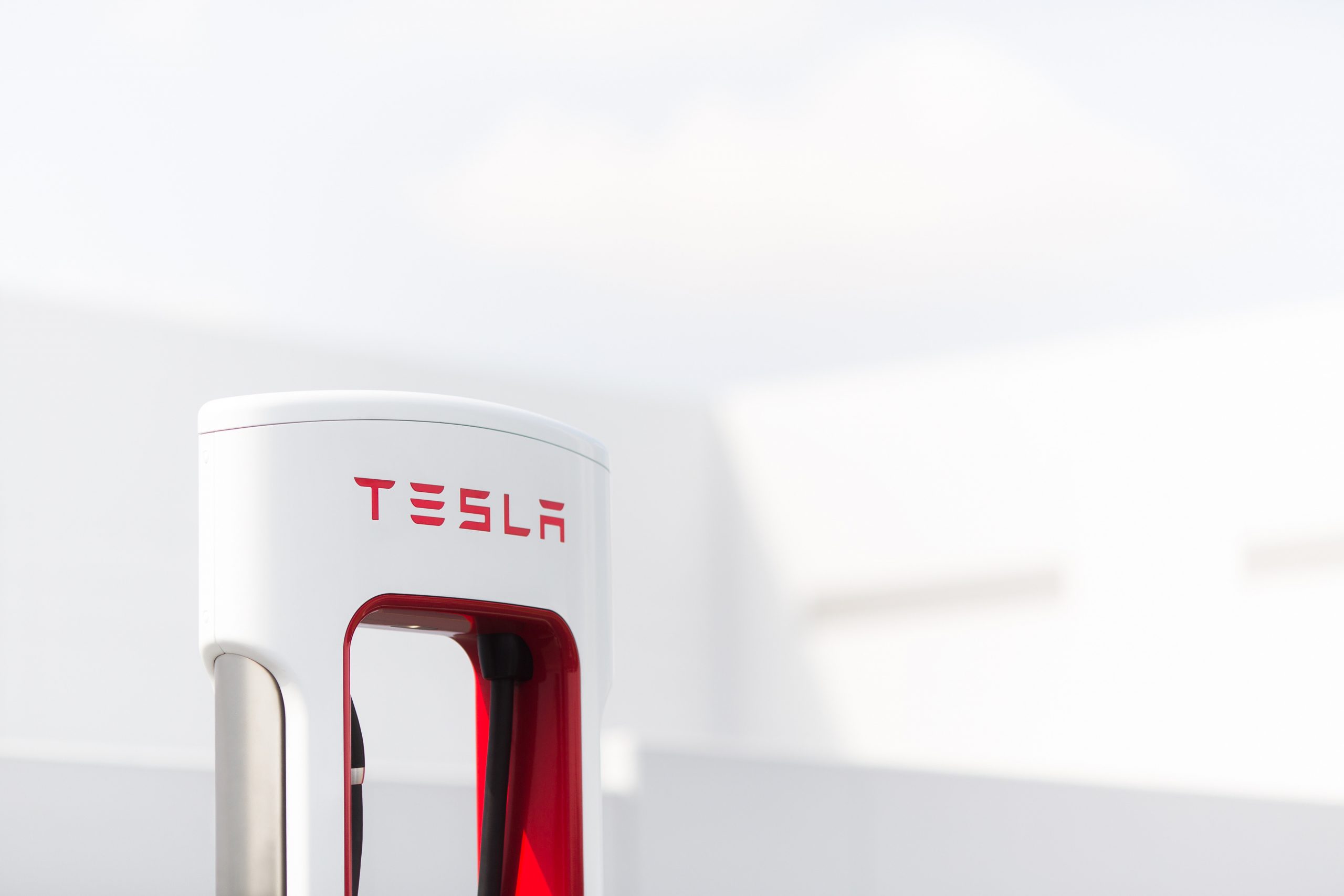

News
EXCLUSIVE: Neuralink dragged into humane testing lawsuit – Timeline of Events
Neuralink has been dragged into a lawsuit by the Physicians Committee for Responsible Medicine against the University of California at Davis. The lawsuit, which is amended from its initial filing date of May 2021, seeks to have UC Davis release images and video of inhumanely-treated test subjects, including monkeys, who died after participating in some trials of Neuralink-sponsored research for the development of neural interface implant devices. We have put together an exclusive timeline of events based on interviews and an examination of over 700 pages of documents that UC Davis was required to turn over to the PCRM.
The Physicians Committee for Responsible Medicine (PCRM) is a nonprofit organization with more than 17,000 doctor members. It filed a formal complaint with the United States Department of Agriculture today, claiming UC Davis and Neuralink staff violated the federal Animal Welfare Act related to experiments performed on 23 monkeys. Neuralink paid more than $1.4 million to UC Davis to carry out the experiments.
The PCRM said in a press release that Neuralink and the University “failed to provide dying monkeys with adequate veterinary care, used an unapproved substance known as “Bioglue” that killed monkeys by destroying portions of their brains, and failed to provide for the psychological well-being of monkeys assigned to the experiment.”
In an exclusive interview with Teslarati earlier today, Jeremy Beckham, MPA, MPH, PCRM’s Research Advocacy Coordinator, said that the lawsuit really intends to open up “basic facts about what Neuralink testing did to the animals.” Beckham said monkeys had their brains mutilated in the experiments. Veterinary records, which were shared with Teslarati by the PCRM, show that UC Davis and Neuralink staff performed invasive and deadly experiments on monkeys to assess the effectiveness of the Neuralink device. The letter sent from the PCRM to the USDA earlier today gives several graphic descriptions of how the test animals were treated.
RELATED:
Neuralink details humane animal treatment during Link v0.9 testing
One animal, known as “Animal 6,” was a 6-year-old macaque monkey who was killed on January 16, 2019. The letter states that, on October 10, 2018, implanted electrodes “were placed using an investigational robot,” then, “attached to skull using titanium implant screws.” The location of the screws began to become infected, according to the letter. By January 14th, “Animal 6” had started to pick at the infected area. Staff euthanized the monkey two days later.
Timeline of Events
PCRM has been working to clarify the situation since September 2020, but a more descriptive timeline of events would clarify how Neuralink, UC Davis, and the PCRM have all combined into this issue.
- May 2017 – The University of California at Davis and Neuralink sign and agree to Non-Disclosure Agreements regarding testing.
- September 2017 – UC Davis and Neuralink officially begin their collaboration to carry out primate experiments at UC Davis facilities. The goal is to develop a brain-machine interface.
- July 2018 – “Animal 4,” an 11-year-old macaque monkey is killed in the Neuralink/UC Davis experiments, according to the complaint. The monkey was “on anti-depressants and had chronic diarrhea and poor appetite.” Additionally, the monkey was observed as “lethargic” and “depressed,” and hunched and passed bloody diarrhea. The monkey eventually died in a deadly procedure on July 20th.
- Also in July 2018 – “Animal 12,” approximately 7-years-old, undergoes a craniotomy and electrode insertion procedure. Records show the animal had “severe clinical adverse effects following the implantation, had poor stool quality, was not eating, and had an eye infection.” Records abruptly ended on July 30th.
- September 2018 – “Animal 21,” a 7-year-old female macaque undergoes an “electrode insertion survivability” procedure using “investigational robotics.” The animal was observed with adverse side effects the following day, including vomiting, gasping, retching, and had little interaction with their environment and observers. The animal was euthanized and had signs of “Bioglue,” an unapproved adhesive, covering the brain.
- December 2018 – “Animal 15,” a 7-year-old female macaque undergoes a craniotomy and recording device implantation. Following the surgery, the area became infected and bloody. The animal was euthanized on March 21, 2019. The performed necropsy shows “remnant electrode threads.”
- January 2019 – “Animal 6,” a 6-year-old macaque monkey is killed as a part of the “experimental design.” Electrodes were secured by screws drilled into the monkey’s skull, and lab staff were forced to “frequently clean” the eroding skin near the monkey’s implant site.
- March 2019 – “Animal 11” is killed at approximately 11-years-old during a terminal procedure. The monkey had an implant placed on the head or brain on December 3rd, 2018, and began experiencing symptoms like a weakened appetite and missing fingers and toes, possibly caused by self-mutilation.
- January 2020 – “Animal 5,” another macaque monkey is killed “inadvertently” by an anticonvulsant. He showed signs of significant weight loss and alopecia.
- July 2020 – Neuralink’s Elon Musk announces that the company will hold an event on August 28th, 2020, to display the progress of the V0.9 device. “Will show neurons firing in real-time on August 28th. The matrix in the matrix,” Musk said in a Tweet.
- Also in July 2020 – Neuralink receives a ‘breakthrough device’ designation from the FDA in July, and the company is working with the agency to make the technology as safe as possible.
- August 2020 – Neuralink unveils the v0.9 device, displaying healthy and functioning pigs. Musk delivers a presentation on the new device, showing the simplified product Neuralink has developed. “It’s like a FitBit in your skull with tiny wires,” Musk half-joked. “I could have it right now and you wouldn’t even know. Maybe I do!” The device is said to be installed without general anesthesia. There will be no bleeding, and no noticeable damage after the device is implanted.
- September 2020 – The PCRM files a California Public Records request, wishing for information regarding UC Davis trials of the Neuralink device. The request is eventually denied in accordance with California State Code 6255(a), which says that the Agency “shall justify withholding any record by demonstrating that the record in question is exempt under express provisions of this chapter or that on the facts of the particular case the public interest served by not disclosing the record clearly outweighs the public interest served by disclosure of the record.”
- October 2020 – “Animal 10,” an 8-year-old macaque monkey, is shipped to Neuralink’s facility in Fremont. The monkey has significant hair loss, had lesions from “unspecified traumas,” and was exhibiting self-mutilating behavior.
- November 2020 – Neuralink severs ties with UC Davis on November 11. Neuralink then moves seven of the remaining monkeys to its facility in Fremont, California. Beckham said that records show 15 of the 23 monkeys used in the research died or were euthanized at UC Davis. The final monkey’s situation is unclear, but it is possible the animal was reassigned to a different project at UC Davis, Beckham said.
- April 2021 – Neuralink releases a YouTube video of “Pager the Monkey” allegedly playing video games with a wireless neural interface. The video features a nine-year-old Macaque named Pager playing “MindPong” while utilizing a Neuralink device.
- May 2021 – PCRM sues the University of California Davis under the California Public Records Act (CPRA) for not releasing records in September 2020. Before the suit reaches a judicial decision, Counsel for the University of California agrees to release 700 pages of information.
- October 2021 – University of California’s General Counsel turns over files including animal testing records and veterinarian reports to PCRM. More than 700 pages of records are turned over.
- February 2022 – PCRM files a separate complaint with the U.S. Department of Agriculture that alleges the information the organization has already received reveals evidence of violations of Federal Animal Welfare laws.
Moving Forward
Beckham maintains that the main point of the newest filing is to have UC Davis turn over photographs and videos that reveal the inhumane treatment of the animals due to the experiments. There are monkeys convulsing, vomiting, and dying in these labs,” Beckham said. “People want to step in line for the first human trials, and they should see this before they commit to that,” he told Teslarati. Neuralink was set for human trials this year, Musk said last year.
Beckham said that these complaints can take a while to work through the legal system. “In my years of being involved with humane testing litigation, I know that these things can take some time. Maybe up to a year,” he said. “It also depends how much they want to fight back.”
Neuralink did not immediately respond to our requests for comment.
Beckham’s full letter to the USDA is available below.
2022-02-10 PCRM USDA Complaint Re UC Davis and Neuralink (No Exhibits) by Joey Klender on Scribd
I’d love to hear from you! If you have any comments, concerns, or questions, please email me at joey@teslarati.com. You can also reach me on Twitter @KlenderJoey, or if you have news tips, you can email us at tips@teslarati.com.

Investor's Corner
SpaceX IPO is coming, CEO Elon Musk confirms
However, it appears Musk is ready for SpaceX to go public, as Ars Technica Senior Space Editor Eric Berger wrote an op-ed that indicated he thought SpaceX would go public soon. Musk replied, basically confirming it.

Elon Musk confirmed through a post on X that a SpaceX initial public offering (IPO) is on the way after hinting at it several times earlier this year.
It also comes one day after Bloomberg reported that SpaceX was aiming for a valuation of $1.5 trillion, adding that it wanted to raise $30 billion.
Musk has been transparent for most of the year that he wanted to try to figure out a way to get Tesla shareholders to invest in SpaceX, giving them access to the stock.
He has also recognized the issues of having a public stock, like litigation exposure, quarterly reporting pressures, and other inconveniences.
However, it appears Musk is ready for SpaceX to go public, as Ars Technica Senior Space Editor Eric Berger wrote an op-ed that indicated he thought SpaceX would go public soon.
Musk replied, basically confirming it:
As usual, Eric is accurate
— Elon Musk (@elonmusk) December 10, 2025
Berger believes the IPO would help support the need for $30 billion or more in capital needed to fund AI integration projects, such as space-based data centers and lunar satellite factories. Musk confirmed recently that SpaceX “will be doing” data centers in orbit.
AI appears to be a “key part” of SpaceX getting to Musk, Berger also wrote. When writing about whether or not Optimus is a viable project and product for the company, he says that none of that matters. Musk thinks it is, and that’s all that matters.
It seems like Musk has certainly mulled something this big for a very long time, and the idea of taking SpaceX public is not just likely; it is necessary for the company to get to Mars.
The details of when SpaceX will finally hit that public status are not known. Many of the reports that came out over the past few days indicate it would happen in 2026, so sooner rather than later.
But there are a lot of things on Musk’s plate early next year, especially with Cybercab production, the potential launch of Unsupervised Full Self-Driving, and the Roadster unveiling, all planned for Q1.
News
Tesla adds 15th automaker to Supercharger access in 2025

Tesla has added the 15th automaker to the growing list of companies whose EVs can utilize the Supercharger Network this year, as BMW is the latest company to gain access to the largest charging infrastructure in the world.
BMW became the 15th company in 2025 to gain Tesla Supercharger access, after the company confirmed to its EV owners that they could use any of the more than 25,000 Supercharging stalls in North America.
Welcome @BMW owners.
Download the Tesla app to charge → https://t.co/vnu0NHA7Ab
— Tesla Charging (@TeslaCharging) December 10, 2025
Newer BMW all-electric cars, like the i4, i5, i7, and iX, are able to utilize Tesla’s V3 and V4 Superchargers. These are the exact model years, via the BMW Blog:
- i4: 2022-2026 model years
- i5: 2024-2025 model years
- 2026 i5 (eDrive40 and xDrive40) after software update in Spring 2026
- i7: 2023-2026 model years
- iX: 2022-2025 model years
- 2026 iX (all versions) after software update in Spring 2026
With the expansion of the companies that gained access in 2025 to the Tesla Supercharger Network, a vast majority of non-Tesla EVs are able to use the charging stalls to gain range in their cars.
So far in 2025, Tesla has enabled Supercharger access to:
- Audi
- BMW
- Genesis
- Honda
- Hyundai
- Jaguar Land Rover
- Kia
- Lucid
- Mercedes-Benz
- Nissan
- Polestar
- Subaru
- Toyota
- Volkswagen
- Volvo
Drivers with BMW EVs who wish to charge at Tesla Superchargers must use an NACS-to-CCS1 adapter. In Q2 2026, BMW plans to release its official adapter, but there are third-party options available in the meantime.
They will also have to use the Tesla App to enable Supercharging access to determine rates and availability. It is a relatively seamless process.
News
Tesla adds new feature that will be great for crowded parking situations
This is the most recent iteration of the app and was priming owners for the slowly-released Holiday Update.

Tesla has added a new feature that will be great for crowded parking lots, congested parking garages, or other confusing times when you cannot seem to pinpoint where your car went.
Tesla has added a new Vehicle Locator feature to the Tesla App with App Update v4.51.5.
This is the most recent iteration of the app and was priming owners for the slowly-released Holiday Update.
While there are several new features, which we will reveal later in this article, perhaps one of the coolest is that of the Vehicle Locator, which will now point you in the direction of your car using a directional arrow on the home screen. This is similar to what Apple uses to find devices:
Interesting. The location arrow in the Tesla app now points to your car when you’re nearby. pic.twitter.com/b0yjmwwzxN
— Whole Mars Catalog (@wholemars) December 7, 2025
In real time, the arrow gives an accurate depiction of which direction you should walk in to find your car. This seems extremely helpful in large parking lots or unfamiliar shopping centers.
Getting to your car after a sporting event is an event all in itself; this feature will undoubtedly help with it:
The nice little touch that Tesla have put in the app – continuous tracking of your vehicle location relative to you.
There’s people reporting dizziness testing this.
To those I say… try spinning your phone instead. 😉 pic.twitter.com/BAYmJ3mzzD
— Some UK Tesla Guy (UnSupervised…) (@SomeUKTeslaGuy) December 8, 2025
Tesla’s previous app versions revealed the address at which you could locate your car, which was great if you parked on the street in a city setting. It was also possible to use the map within the app to locate your car.
However, this new feature gives a more definitive location for your car and helps with the navigation to it, instead of potentially walking randomly.
It also reveals the distance you are from your car, which is a big plus.
Along with this new addition, Tesla added Photobooth features, Dog Mode Live Activity, Custom Wraps and Tints for Colorizer, and Dashcam Clip details.
🚨 Tesla App v4.51.5 looks to be preparing for the Holiday Update pic.twitter.com/ztts8poV82
— TESLARATI (@Teslarati) December 8, 2025
All in all, this App update was pretty robust.








